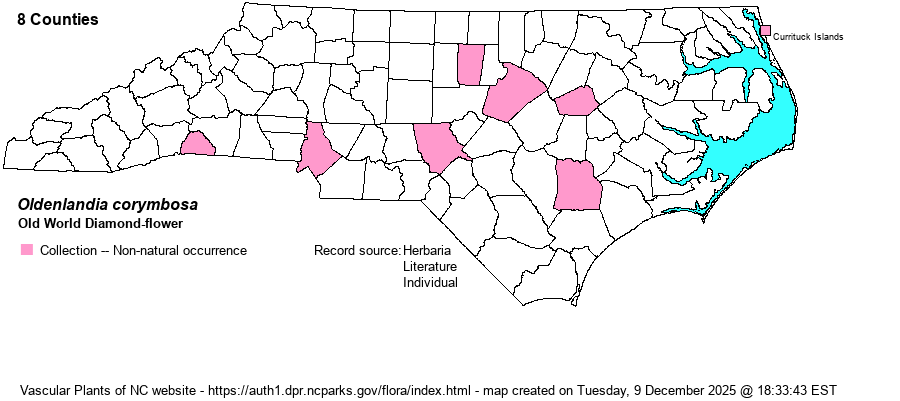| Author | L. | |
| Distribution | Widely scattered in 7 counties. No doubt other populations exist. First discovered in NC by Oliver M. Freeman in 1956, NW of Tryon, Polk County. Recently collected in Duplin (2003), Mecklenburg (2017), Currituck (2018), Moore (2020), Wilson (2023), and Wake (2024) counties. Weakley (2018) also mentions a report by Guy Nesom (2000) from Orange County.
Native of South America; in N.A. VA to FL, TX, and AR. | |
| Abundance | Rare, but seems to be spreading in SC and NC, according to verbal communications by various botanists. | |
| Habitat | Seasonally wet hardpan forest (Mecklenburg Co.), garden weed (Duplin Co.), sandy roadside (Currituck Co.), cultivated land (Polk Co.), gravel driveway (Moore Co.). | |
| Phenology | Flowering and fruiting July-October. | |
| Identification | This plant is slender, the stems up to a foot or more tall and widely branching. In unfavorable situations, plants are less than 6 inches long and rather prostrate. The leaves are opposite and vary from linear to lance-shaped. The flowers occur singly or a few together in upper axils, tiny, white, with 4 pointed petals. The flowers are on quite long pedicels. | |
| Taxonomic Comments | | |
| Other Common Name(s) | Flat-top Mille Graines | |
| State Rank | SE | |
| Global Rank | GNR | |
| State Status | | |
| US Status | | |
| USACE-agcp | FAC link |
| USACE-emp | FAC link |

